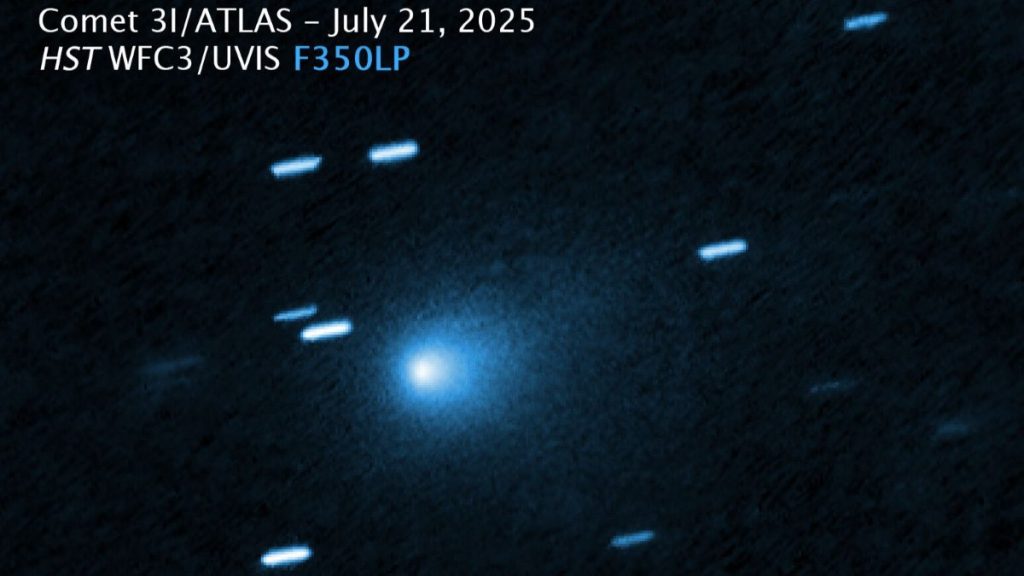A new interstellar visitor has sparked an intense debate across the scientific community.
Others are reading now
The object known as 3I/ATLAS, detected earlier this year, is only the third recorded body from beyond our solar system.
Now, Harvard astrophysicist Avi Loeb says its unusual behaviour and composition could suggest something more than a natural origin.
A mysterious visitor
3I/ATLAS, first observed by NASA’s ATLAS telescope in July 2025, has since shown several anomalies that have puzzled astronomers.
Passing close to the Sun on October 29, the comet-like object has displayed properties unlike any previously known comet or asteroid.
Loeb, head of Harvard University’s Galileo Project, outlined nine specific reasons why 3I/ATLAS might not be a typical interstellar rock.
Also read
His latest analysis combines orbital data, spectroscopic results, and comparisons with previous interstellar objects, 1I/‘Oumuamua and 2I/Borisov.
Below are the nine anomalies Loeb identifies, and why each matters.
1. A rare orbital path
Loeb notes that 3I/ATLAS follows a retrograde trajectory unusually aligned with the plane of the planets.
“Its retrograde trajectory is aligned to within five degrees with the ecliptic plane,” he explained.
The probability of such alignment by chance, he calculates, is about 0.2 percent. This precise alignment suggests a directed or engineered entry path rather than a random interstellar passage.
Also read
2. The appearance of an anti-tail
During July and August 2025, the comet displayed what astronomers call a sunward jet or anti-tail. In familiar comets, these features are typically optical illusions caused by viewing angles.
Loeb says that in the case of 3I/ATLAS, the effect cannot be explained by geometry alone.
This, he argues, suggests unusual material or energy activity inconsistent with known natural behaviour.
3. Unusual mass and velocity
Data show that 3I/ATLAS has a nucleus about a million times more massive than 1I/‘Oumuamua and a thousand times more massive than 2I/Borisov, yet it travels faster than both.
The odds of this combination occurring naturally, Loeb estimates, are less than 0.1 percent.
Also read
Such mass and speed make it one of the most energetic interstellar bodies ever observed.
4. Coincidental timing
Loeb also points to what he calls “fine-tuned timing.”
The object’s trajectory brought it within close range of Mars, Venus, and Jupiter within a few weeks of each other, while remaining hidden from Earth during its perihelion, its nearest approach to the Sun.
He calculates the odds of that happening randomly as just 0.005 percent.
5. Industrial-level nickel
Spectroscopic analysis revealed that 3I/ATLAS’s gas plume contains far more nickel than iron.
Also read
Loeb notes that this ratio mirrors that of nickel-based alloys produced in industrial processes on Earth.
The concentration, he adds, is orders of magnitude higher than in any known natural comet. The chance of such a composition arising naturally is below 1 percent.
6. Almost no water
Unlike familiar comets, which are mostly ice, 3I/ATLAS appears to contain only about four percent water by mass.
Loeb argues that this dryness indicates a composition more like manufactured metal or stone than a frozen celestial body.
7. Unusual light polarization
Observations show that 3I/ATLAS reflects light with extreme negative polarization, a property not seen in other comets.
Also read
Loeb estimates the odds of this occurring naturally at under 1 percent.
He suggests that the effect might come from artificial surfaces or engineered materials rather than ice and dust.
8. A link to the “Wow! Signal”
3I/ATLAS entered the solar system from nearly the same direction as the mysterious “Wow! Signal,” a strong radio burst detected in 1977 and long associated with speculation about extraterrestrial intelligence.
Loeb says the coincidence, within nine degrees, has a likelihood of just 0.6 percent.
9. An extraordinary brightening
Near its closest approach to the Sun, 3I/ATLAS suddenly brightened faster than any known comet and appeared bluer than the Sun itself.
Also read
Solar observatories including STEREO, SOHO, and GOES-19 recorded the event.
Loeb describes the phenomenon as “unprecedented,” suggesting it could indicate artificial illumination or reflection.
Awaiting confirmation
Loeb acknowledges that if 3I/ATLAS is a natural comet, it must have lost about 15 percent of its mass to explain its motion.
That loss would produce a debris cloud weighing billions of tons. “It would be impossible to miss this massive cloud in upcoming observations,” he wrote.
If no such cloud appears, he says, that would mark “the tenth anomaly”, unexplained acceleration without visible mass loss.
Also read
For now, Loeb continues to call for open analysis rather than dismissal.
“What matters is data, logic, and experimentation by those willing to be proven wrong,” he wrote in a recent reply to supporters.
As 3I/ATLAS approaches its closest point to Earth in December, astronomers worldwide will be watching for signs that could settle one of the most intriguing scientific questions of the decade.
Sources: Medium (Avi Loeb), Lowell Observatory, Harvard-Smithsonian Center for Astrophysics.


